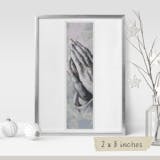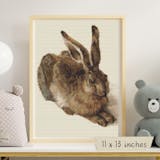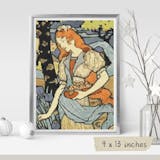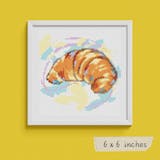The Basics of Cross Stitching
Starting this amazing hobby doesn’t require much. In fact, if you purchase a kit, it will include everything you need. However, if you choose to get a chart, there are a few essentials you’ll need to gather before you begin your project.

Fabric
Fabric is crucial, and there are many types to choose from. First, decide on the count you’d like to use. Most charts recommend a specific count, but you don’t have to stick to their suggestion. If 28 or 32 count fabric feels too fine, opt for an 18-count fabric, which is easier to stitch on and doesn’t significantly compromise the result. Keep in mind that higher count fabrics (like 32 count) produce smaller, tighter designs, while lower count fabrics (like 18 count) make larger designs. Always check the fabric size before purchasing, and remember to include at least 3 extra inches for framing.
Once you’ve chosen the count, you can select the type of fabric. There are soft fabrics, hard fabrics, non-fraying fabrics, and embellished fabrics. The most common fabric is Aida, which is widely available and becomes softer and easier to handle as you work on your project.
Needle
Needles come in several sizes, and it’s best to choose one suited to your fabric count. Sizes range from 18 to 28, with size 28 being the most common for 18-count Aida fabric.
Thread or Floss
Cross stitch thread, also known as floss, is available from several manufacturers, with Anchor and DMC being the most popular. Floss comes in a vast array of colors and is made of 6 strands. For cross stitching, you typically separate the floss into sets of 2 strands for full stitches, 1 strand for half-stitches, and sometimes a combination of colors for special effects. Keep any leftover floss for future projects or custom designs, as it can be very handy if you run short.
Optional Accessories
The essentials mentioned above will get you started, but there are a few optional items that can make your stitching experience more enjoyable:
- Storage Containers: Useful for organizing your supplies.
- Embroidery Hoop: Helps keep your fabric taut while you stitch.
- Thimble: Protects your finger while pushing the needle through the fabric.
These optional items are nice to have, but not strictly necessary. Choose what makes your stitching experience more comfortable and enjoyable. Happy stitching!





